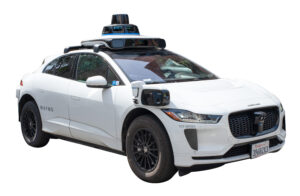Month: June 2025
The Cybertruck’s Future Is Brighter Than You Think
Tesla unveiled its cheapest Cybertruck in April. The Long Range Rear-Wheel Drive Cybertruck costs
roughly $70,000 and has a 350-mile range, compared to the previous model’s 250 mile
range.

Tesla unveiled its cheapest Cybertruck in April. The Long Range Rear-Wheel Drive Cybertruck costs roughly $70,000 and has a 350-mile range, compared to the previous model’s 250 mile range. (CHARLY TRIBALLEAU/AFP VIA GETTY IMAGES)
While running errands in suburban Boston recently, I spotted two Cybertrucks
within the space of just a few minutes. The first was painted white, emblazoned
with American flags. The other was the now-familiar matte-finished, stainless
steel model, which I have begun to see on a regular basis. It occurred to me then
what I see now in the data: Rumors of the Cybertruck’s demise may be
premature.
With the launch of the Cybertruck in late 2023, Tesla aimed to gain a foothold in
the U.S. pickup truck market—which sells nearly three million units annually.
Unlike any of the full-size pickup trucks available from Ford, General Motors,
and Stellantis, which dominate the gasoline-powered U.S. pickup truck market,
the Cybertruck is, in the words of the announcer on Monty Python, something
completely different. Its angular, futuristic aesthetic is a blend of Bauhaus and
Blade Runner. Its early adopters are auto-enthusiasts, enthralled by the truck’s
unique—if for some—polarizing appearance.
When Tesla entered the electric vehicle truck market, the water had already been
warmed by Rivian. Its R1T won Motor Trend’s 2022 Truck of the Year. Ford’s F150 Lightning received the same award the following year.
Sales of EV pickup trucks have been modest. Earlier this year, Ford announced it had sold 33,510 Ford F-150 Lightning EVs in 2024, an increase of 39% from the
previous year. Rivian doesn’t publish unit sales by model, but my firm, Battle Road Research, estimates it sold roughly 12,000 R1Ts in 2024, likely flat with
2023. Tesla, for its part, doesn’t reveal sales by model. But it reported that its “Other Models” category, which includes the Cybertruck, Model S, Model X, and
the Tesla Semi, accounted for 85,133 units delivered in 2024. Cox Automotive estimates nearly 39,000 Cybertrucks were sold last year.
If that number is correct, then for all of the negative press and criticism of its design and reliability, the Cybertruck became the category leader in its first full
year of availability. We now estimate Tesla’s share at 36% of a 108,000-unit market in the U.S. Ford’s F-150 Lightning follows with 31% market share.
Tesla CybertruckFord F-150 LightningGMC Hummer EVRivian R1TChevrolet Silverado EVOther0k51015202530354045
The road to leadership has been rocky for Tesla. The Cybertruck has had its share of recalls—though a recall isn’t the headache it was in the pre-EV era, when every
issue required a trip to the dealership. Like Apple, Tesla has been able to address many of its flaws through over-the-air software updates, such as enlarging the
font size of its instrument panel so that braking and parking indicators could be seen. Flaws in the rearview camera’s display and in the warning light for the tire
pressure monitoring system were also fixed with software updates. Some physical recalls have been required to fix things like a trapped foot pedal
that caused unintended acceleration. Of course, the Ford F-150 Lightning and the Rivian R1T have also had their share of physical recalls.
The Cybertruck will now have to face-off with the venerable GM, another newcomer to the EV pickup market. GM is taking a portfolio approach, with three
different EV pickup models: the GMC Hummer EV (available as an SUV or pickup truck), the Sierra EV, and the Chevrolet Silverado EV.
But GM, like Ford, has much to lose by entering the EV market. It has roughly 40% of the conventional pickup truck market. Ford, which dominated the pickup
truck market for nearly a half-century, now has 32% of the market, with 765,649 F-series units sold in 2024. So there may be little or no incentive for them to
cannibalize the sales of their gas-powered pickups, particularly since those tend to be their most profitable models. This may be why both GM and Ford
are pouring cold water on the idea that EVs will one day soon overtake gaspowered engines. All indications are that Tesla will remain committed to the category. This year,
Tesla started offering a long-range rear wheel drive version of the Cybertruck priced at $70,000, which makes it the first model to qualify for the full Inflation
Reduction Act’s $7,500 EV tax credit. Previously, only the Ford F-150 Lightning and Chevy Silverado qualified for the full credit.
Tesla will likely remain one of the category’s volume leaders. Cox Automotive estimates that in the first quarter of 2025, Cybertruck registrations totaled 7,126, just behind Ford’s F-150 Lightning sales of 7,913.
If Tesla wants to gain more market share, it will need to get down the cost curve with a reasonable price for the Cybertruck. At some point, though probably not
for at least a couple of years, another incarnation of the Cybertruck will breach the $50,000 price level. There is precedent for this type of price and performance
improvement in Tesla’s product line: The Model 3 is a more affordable version of the Model S, and the Model Y is a dramatically lower-priced version of the Model
X.
So don’t be surprised if in the next few years Tesla unveils a Cybertruck successor—smaller, fleeter, and faster.
Is Waymo the Way to Go?
 By Eve Regina Rose
By Eve Regina Rose
June 9, 2025
What shocked me most about my maiden voyage in a driverless car took place long
after the ride. Not during it.
I don’t mean that nothing about my eight Waymo trips around San Francisco took me off
guard. The steering wheel moved back and forth, which looks creepy when there isn’t a
pair of hands to control it. Ghostlike is not a good look.
Nor do I mean to imply that I never got nervous. When our Waymo pulled around a car
that was double parked and squeezed past an oncoming BMW, we screamed quite
loudly. But Waymo handled it with Finesse. Even if we didn’t.
Other than that, it was pure pleasure. No tips, no talking. I hate chit chat and often
forget to tip with Uber and Lyft. The electric car was quiet, clean and I could even curate
the music on a screen (‘60s Classics as we cruised through Haight Ashbury…Mellow
jazz after a late night).
The car arrived exceedingly fast. It picks you up from where you call it unless it’s too
dangerous. When we ordered a Waymo in the middle of a crowd that had spilled onto
the street, Waymo steered clear, parking across from us where it was safer.
It had a fun factor I didn’t expect. It was like going on a ride at Disney World. Or starring
in my own Sci-Fi movie. I couldn’t wait to order the next one.
The real shocker came later when I learned just how many people didn’t share my
enthusiasm:
“I would never go in one of those.”
“Not enough testing for me.”
“Really? You’re crazy.”
Believe me, I am no daredevil. Some might even call me a control freak. But I was
never really scared, especially after the first ride. If anything, the car relaxed me. Better
to rely on a machine than a tired or distracted human (I’ve never been fond of the
ridesharing companies’ untrained amateurs).
Will this fear I encountered from dozens of people be a roadblock for Waymo in the
future?
My hunch is that like any new technology (early car makers were called imbeciles after
all), people will get more comfortable with time and exposure. Waymo just completed its
10 millionth paid ride so clearly some people are already there.
However, the safer these city trials go, the better. People – at least the ones I know –
will still need some persuading.
About the Author: A graduate of the Northwestern University’s Medill School of
Journalism, and the Vermont College of Fine Arts, Eve Regina Rose, a guest
contributor, is an award-winning business journalist. She’s covered everything from the
technology sector to International trade.
Tim Cook to Donald Trump: You Were Serious About That?
 Apple CEO Tim Cook’s response to President Donald Trump’s made-in-America push calls to mind a scene in the movie My Cousin Vinny. Vincent Gambini (played by Joe Pesci), a novice defense attorney, is scolded by Judge Chamberlain Haller (Fred Gwynne) for showing up in his Alabama courtroom without a suit and tie, with the judge taking particular offense to Gambini’s long leather jacket. When Gambini returns to the courtroom for his next appearance he is dressed the same way, but this time the judge holds him in contempt of court. Gambini, in disbelief, says to the judge: “You were serious about that?”
Apple CEO Tim Cook’s response to President Donald Trump’s made-in-America push calls to mind a scene in the movie My Cousin Vinny. Vincent Gambini (played by Joe Pesci), a novice defense attorney, is scolded by Judge Chamberlain Haller (Fred Gwynne) for showing up in his Alabama courtroom without a suit and tie, with the judge taking particular offense to Gambini’s long leather jacket. When Gambini returns to the courtroom for his next appearance he is dressed the same way, but this time the judge holds him in contempt of court. Gambini, in disbelief, says to the judge: “You were serious about that?”


